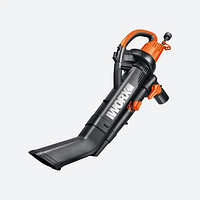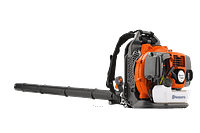As the seasons change and the leaves start to fall, the once-lush green landscapes transform into a vibrant tapestry of autumnal hues.
While this natural beauty can be a sight to behold, the inevitable task of leaf cleanup can quickly become a daunting chore for homeowners and landscapers alike. Enter the leaf vacuum - a powerful tool that revolutionizes the way we approach lawn maintenance and debris removal.
In this comprehensive guide, we'll delve into the world of leaf vacuum systems, exploring their features, benefits, and the top models available on the market.
Understanding Leaf Vacuum Systems
Leaf vacuum systems are versatile outdoor power tools designed to efficiently collect, shred, and store fallen leaves and other yard debris.
These machines utilize a powerful suction mechanism to gather the material, which is then either bagged or deposited into a designated collection container.
The key components of a leaf vacuum system typically include:
- Suction Intake: The suction intake is the primary opening through which the leaves and debris are drawn into the machine. This component is often equipped with a nozzle or hose attachment to facilitate targeted cleanup in hard-to-reach areas.
- Impeller: The impeller is a high-speed rotating component that creates the powerful suction required to lift and transport the collected material. This feature also helps to shred the leaves, reducing their volume and making disposal more manageable.
- Collection Bag or Container: The collected leaves and debris are stored in either a reusable bag or a rigid container, depending on the model. This allows for easy disposal or composting of the gathered material.
- Engine or Motor: Leaf vacuum systems are powered by either a gas-powered engine or an electric motor, depending on the specific model. The power source determines the machine's portability, runtime, and overall performance.
- Mulching or Shredding Mechanism: Some leaf vacuum systems incorporate an additional mulching or shredding mechanism that further breaks down the collected material, making it more suitable for composting or disposal.
Key Benefits of Leaf Vacuum
Investing in a high-quality leaf vacuum system can provide a multitude of benefits for homeowners and landscapers alike.
Let's explore some of the key advantages of incorporating a leaf vacuum into your lawn maintenance routine:
- Efficient Leaf Cleanup: Leaf vacuum systems are designed to quickly and effectively gather fallen leaves, eliminating the need for manual raking or sweeping. This saves time and effort, allowing you to maintain a tidy and well-manicured outdoor space with minimal physical exertion.
- Improved Lawn Health: Leaving a thick layer of fallen leaves on your lawn can lead to issues such as smothering, disease, and the promotion of moss growth. A leaf vacuum system helps to remove this organic matter, allowing sunlight and air to reach the grass, promoting healthy growth and preventing damage.
- Reduced Disposal Challenges: Leaf vacuum systems often include a shredding or mulching function, which reduces the volume of the collected material. This makes it easier to dispose of or compost the leaves, reducing the burden on landfills and promoting sustainable waste management.
- Versatility and Convenience: Many leaf vacuum systems are designed with versatility in mind, allowing users to switch between vacuum and blower modes. This enables you to not only collect leaves but also clear debris from pathways, driveways, and other hard surfaces, streamlining your overall outdoor cleanup tasks.
- Improved Aesthetics: A well-maintained lawn free of unsightly leaf litter can significantly enhance the overall curb appeal and aesthetic of your property. By using a leaf vacuum system, you can keep your outdoor spaces looking neat, tidy, and visually appealing.
- Reduced Allergens: Fallen leaves can harbor mold, pollen, and other allergens that can trigger respiratory issues for some individuals. Regularly using a leaf vacuum system helps to remove these irritants, improving the air quality in your outdoor living spaces.
Top Leaf Vacuum Models
With a wide range of leaf vacuum systems available on the market, it can be challenging to determine the best option for your specific needs.
To help you make an informed decision, let's explore some of the top leaf vacuum models and their key features:

1. Worx Trivac 3-in-1 Leaf Vacuum, Blower, and Mulcher
- Powerful 12-amp motor with 210 mph air speed
- 3-in-1 functionality: vacuum, blower, and mulcher
- Mulching ratio of 16:1, reducing leaf volume for easier disposal
- Includes a 1.2-bushel collection bag and shoulder strap for easy maneuvering
- Lightweight design at only 8.1 pounds

2. Husqvarna 350BT Backpack Leaf Blower
- Powerful 50cc X-Torq engine with 180 mph air speed
- Comfortable backpack design for extended use
- Cruise control function for consistent airflow
- Versatile nozzle attachments for targeted cleanup
- Noise-reducing features for a quieter operation

3. Toro UltraPlus Leaf Blower Vacuum
- Patented Shred-All suction system with a 12:1 mulching ratio
- 250 mph air speed for efficient debris collection
- Includes a 1.5-bushel bag and a metal impeller for durability
- Converts easily between vacuum and blower modes
- Lightweight and ergonomic design for user comfort

4. BLACK+DECKER 3-in-1 Electric Leaf Blower, Vacuum, and Mulcher
- Powerful 12-amp electric motor with 250 mph air speed
- Mulching ratio of 16:1 to reduce leaf volume
- Includes a 1.5-bushel collection bag and a shoulder strap
- Converts quickly between vacuum and blower modes
- Lightweight and compact design for easy storage

5. Stihl BG 86 C-E Handheld Gas Blower
- Fuel-efficient 27.2 cc 2-stroke engine
- Cruise control function for consistent airflow
- Adjustable air volume and air speed controls
- Comfortable, ergonomic handle design
- Versatile nozzle attachments for targeted cleanup
Preparing Your Lawn for Leaf Vacuum Usage
Before you begin using your leaf vacuum USA, it's essential to properly prepare your lawn and outdoor spaces.
By following these steps, you can maximize the efficiency of your cleanup efforts and maintain a healthy, well-manicured landscape:
- Mow the Lawn: Start by mowing your lawn to a slightly shorter length than usual. This will help to expose the fallen leaves and make them more accessible for the vacuum system.
- Clear Obstacles: Identify and remove any obstacles or debris that may interfere with the leaf vacuum's operation, such as sticks, rocks, or toys. This will prevent potential damage to the machine and ensure a smooth cleanup process.
- Inspect the Vacuum: Thoroughly inspect your leaf vacuum system, ensuring that all components are in good working order. Check the collection bag or container, the suction intake, and the impeller for any signs of wear or damage.
- Choose the Right Attachment: Depending on the specific model, your leaf vacuum may come with various nozzle or hose attachments. Familiarize yourself with these accessories and select the one that best suits the cleanup task at hand, whether it's for tight spaces, open areas, or targeted debris removal.
- Plan Your Cleanup Route: Take a moment to survey your outdoor space and plan the most efficient route for your leaf vacuum cleanup. This will help you cover the entire area without missing any spots and minimize the time and effort required.
- Wear Appropriate Attire: Dress for the task at hand, wearing comfortable clothing, sturdy shoes, and any necessary personal protective equipment, such as safety glasses or ear protection, to ensure your safety during the cleanup process.
Techniques for Efficient Leaf Vacuum Usage
Once you've prepared your lawn and outdoor areas, it's time to put your leaf vacuum to work.
Here are some techniques and best practices to help you maximize the efficiency of your cleanup efforts:
- Establish a Consistent Pace: Avoid rushing through the cleanup process, as this can lead to missed spots or uneven coverage. Instead, maintain a steady, consistent pace that allows the vacuum system to effectively gather the leaves and debris.
- Overlap Passes: When moving the vacuum nozzle or hose, be sure to overlap your passes slightly. This will help ensure that you don't leave any gaps or missed areas, resulting in a thorough and complete cleanup.
- Utilize Blower Mode: Many leaf vacuum systems offer a blower mode, which can be particularly useful for clearing debris from hard surfaces, such as sidewalks, driveways, and patios. Use the blower function to push leaves and other materials into piles, making them easier to collect with the vacuum.
- Adjust the Suction Power: Depending on the density and volume of the leaves, you may need to adjust the suction power of your leaf vacuum. Higher suction settings are typically better for thick, heavy leaf accumulations, while lower settings may be more appropriate for lighter, scattered debris.
- Empty the Collection Bag Regularly: Keep a close eye on the collection bag or container, and empty it before it becomes too full. This will prevent the vacuum from losing suction and ensure that you can continue your cleanup without interruption.
- Utilize Mulching Features: If your leaf vacuum system includes a mulching function, take advantage of it. The mulching process will reduce the volume of the collected material, making it easier to dispose of or compost.
- Pay Attention to Airflow: Ensure that the suction intake and any hose or nozzle attachments are not obstructed, as this can reduce the overall airflow and efficiency of the vacuum system.
- Maintain the Machine: After each use, clean the vacuum's components, check for any damage or wear, and perform any necessary maintenance to keep the machine in top working condition.
Leaf Disposal and Composting Considerations
Once you've successfully collected the leaves and debris using your leaf vacuum, the next step is to properly dispose of or compost the gathered material.
Here are some considerations to keep in mind:
- Bagging and Disposal: If your leaf vacuum system includes a collection bag, carefully remove it and dispose of the contents in your local waste management system. Be mindful of any municipal or regional guidelines regarding leaf disposal, as some areas may have specific requirements or recycling programs in place.
- Composting: Leaf matter can be an excellent addition to your home composting system, providing valuable organic material that can be used to enrich your soil. If your leaf vacuum includes a mulching function, the shredded leaves will decompose more quickly, making them ideal for composting.
- Mulching: Some homeowners choose to leave a thin layer of shredded leaves on their lawn, allowing the material to decompose naturally and provide nutrients for the soil. This can be an effective and sustainable approach, but be sure not to leave too thick a layer, as it could smother the grass.
- Yard Waste Removal: If your community offers yard waste collection services, take advantage of these programs. Many municipalities have dedicated collection days or drop-off locations for leaves, grass clippings, and other organic debris, making the disposal process more convenient.
- Specialized Disposal: In some cases, you may need to explore specialized disposal options for certain types of leaves or debris. For example, some types of leaves may be considered hazardous waste due to chemical treatments or environmental concerns. Research your local regulations and resources to ensure proper and responsible disposal.
Conclusion
The leaf vacuum has become an indispensable tool in the arsenal of homeowners and landscapers alike, revolutionizing the way we approach lawn maintenance and debris cleanup.
By understanding the key features and benefits of these powerful machines, you can streamline your outdoor tasks, enhance the health and aesthetics of your property, and contribute to a more sustainable waste management system.
So, as the leaves begin to fall and the seasons change, embrace the power of the leaf vacuum and reclaim your time, energy, and outdoor living spaces.
